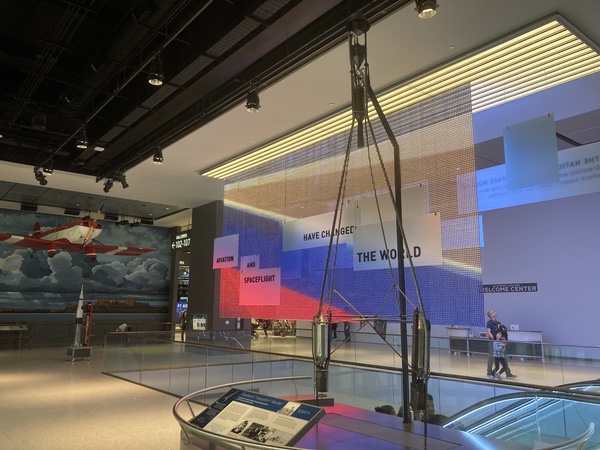Screens and spaceships: inside the renovated National Air and Space Museumby Jeff Foust
|
| The Apollo 11 capsule is the centerpiece of the Destination Moon gallery, but not necessarily the center of attention, as it turns out. |
The first phase of that effort was opened to the public earlier this month. The west half of the building reopened with a mix of familiar and new displays. I didn’t get an invite to a press preview held before the reopening, so I did what the average person wanting to visit the museum now has to do: go online to get a free ticket to secure a date and time to visit (a temporary measure to ease crowding at the half-open museum.) Weekends sell out a week or two in advance, but weekdays are easier and the museum makes some same-day tickets available each morning.
When I arrived at the museum a few minutes before my appointed time, 3 pm on a Friday, I was surprised to see a line to get in stretching down Independence Avenue from the main entrance to the west end of the museum. However, shortly after 3 the line started moving, and within 15 minutes I was through the streamlined security checkpoint and inside.
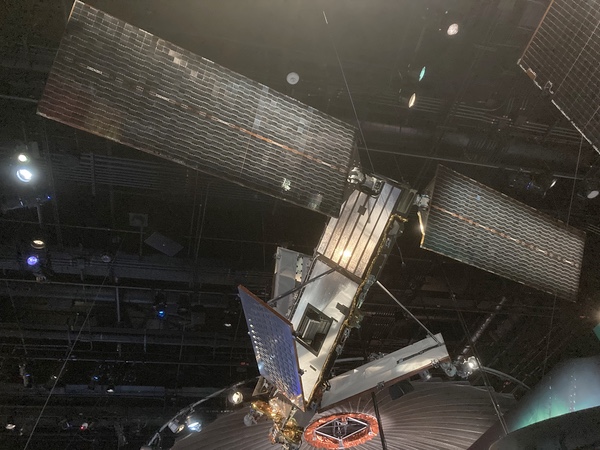 An Iridium satellite model on display in one gallery. (credit: J. Foust) |
On every previous visit, the first thing you would see upon entry is the Milestones of Flight gallery, a collection of historic aircraft and spacecraft that ranged from the X-1 and X-15 to the Apollo 11 command module and SpaceShipOne. That part of the museum, though, remains under renovation, with most of those vehicles still out of view. (Lindbergh’s Spirit of St. Louis is on display, but tucked away almost out of view on the second level.) Instead, there’s a new sign and a couple of artifacts, including a early Robert Goddard rocket.
The space galleries are on the second level of the reopened section of the museum. One, devoted to communications, examines the role that satellites and other technologies have played in connecting the world. It features a flight spare of a SiriusXM Satellite Radio spacecraft, whose bus towers over the other displays in one corner. A second gallery is devoted to exploration of the solar system, with mockups of Mars rovers and other spacecraft, as well as the sample return capsule from the Stardust mission.
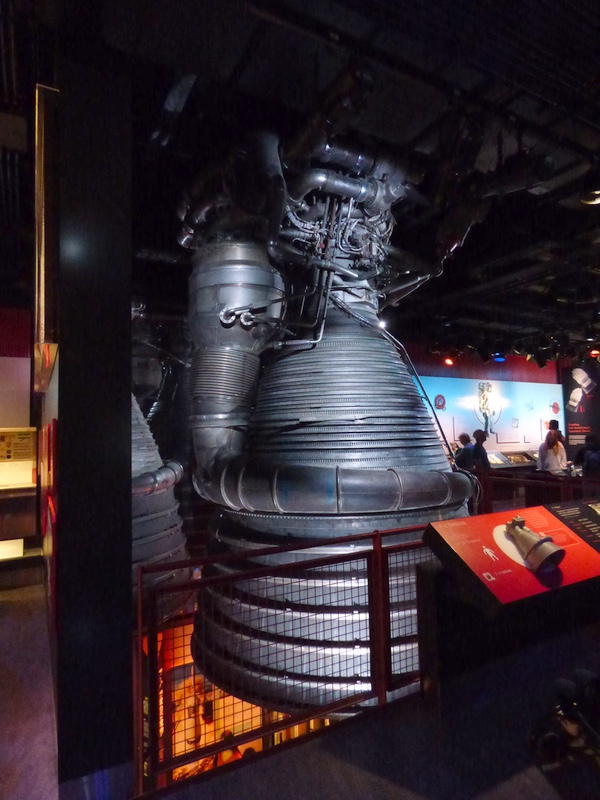 An F-1 engine on display. (credit: J. Foust) |
A third gallery recounts the race to the Moon in the early years of the Space Age. The Apollo 11 command module, relocated from the Milestones of Flight gallery, is the centerpiece here, along with Mercury’s Freedom 7 and Gemini 7. The gallery is rich in other artifacts, from Saturn V F-1 engine components recovered from the ocean to medical kits carried to the Moon and back on Apollo 11.
Any museum is more than a collection of artifacts, and their presentation and explanation has changed over time. Simple placards describing items are augmented by videos and interactive displays. In the communications gallery, for example, one can project satellite coverage footprints on a globe while learning about how satellites provide connectivity in remote regions. The planetary exploration gallery features two large curved screens, arranged to form a circle, on which videos are projected showing the surfaces of worlds ranging from Mars to Comet 67P, the destination of ESA’s Rosetta mission, giving the viewer a sense of standing on those worlds. That gallery also includes large models of planets and moons on the ceiling, with places on the floor marked for people to stand and take selfies with them in the background.
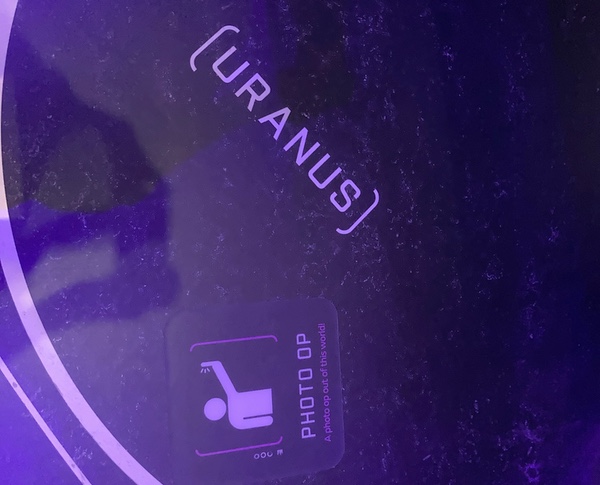 You want to take a photo of what? (credit: J. Foust) |
Seeing how visitors took in that combination of artifacts and multimedia offered insights not possible on a press preview, a relatively sterile affair where the museum is empty but for the media and museum officials. The Apollo 11 capsule is the centerpiece of the Destination Moon gallery, but not necessarily the center of attention, as it turns out. Next to it is a screen showing a video that puts the early Space Age into a broader historical context, mixing spaceflight achievements with historical and cultural milestones, from Star Trek to the Rolling Stones.
That resulted in a slightly jarring scene when entering that part of the gallery: a crowd of people gathered around the screen, their backs turned to one of the most famous spacecraft—or exploration vessels of any kind—in history. That perhaps should not be that surprising: we are a society of screens today, from the small ones in our pockets to the big ones in our living rooms. Still, it was odd to see people transfixed by a video when a piece of history was right behind them. Is Mick Jagger that compelling?
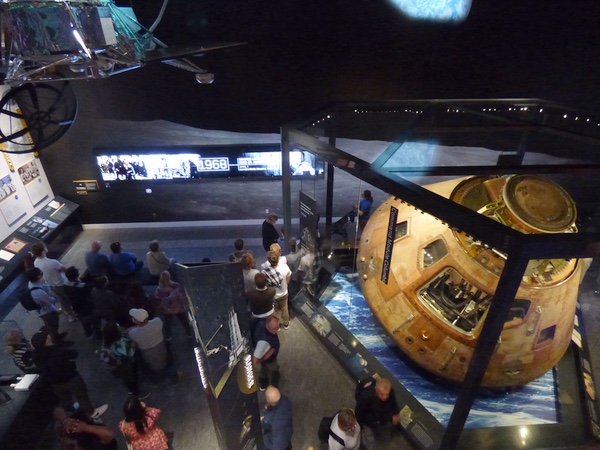 More people seem interested in a video about the Space Race than in the spacecraft that took humans to the Moon and back. (credit: J. Foust) |
To be certain, Apollo 11 wasn’t ignored by attendees, but the juxtaposition of screens and spacecraft reflects the challenges of the modern museum: simply putting artifacts on display is not enough, but they are nonetheless essential to bringing people in when they could watch videos at home. The renovated museum has, by and large, struck a good balance in that, and it will be fascinating to see how they finish the job in the coming years with the other half of the museum.
Note: we are using a new commenting system, which may require you to create a new account.
